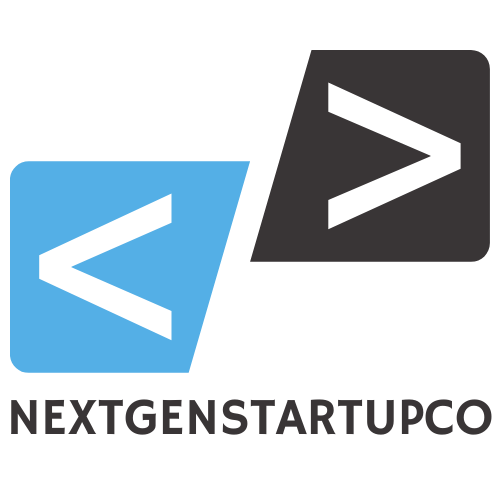In the vast universe of programming languages, JavaScript stands out like a superhero in a room full of mere mortals. It’s the language that powers the web, bringing life to websites and apps with its dynamic capabilities. So, what better way to kick off a coding journey than with the classic “Hello, World!”? It’s the programming equivalent of a warm hug, welcoming newcomers into the exciting world of code.
Table of Contents
ToggleUnderstanding JavaScript
JavaScript stands out as a dynamic, versatile programming language vital for modern web development. Its ease of use makes it an ideal choice for beginners and experienced developers alike.
What Is JavaScript?
JavaScript is a high-level programming language known for its ability to create interactive experiences on the web. As a core component of web technologies, it complements HTML and CSS. This language enables developers to implement complex features such as animations, form validations, and dynamic content updates. Versatility defines JavaScript, as it operates on both the client side and the server side through various platforms such as Node.js. Each instance showcases its capability to enhance user experience.
Importance of JavaScript in Web Development
JavaScript plays a crucial role in web development by allowing the creation of responsive user interfaces. Interactive elements elevate user engagement on websites, making them more appealing. Additionally, JavaScript frameworks like React and Angular streamline the development process, promoting efficiency. These tools enable developers to build single-page applications that load content dynamically, reducing loading times. The rich ecosystem of libraries and frameworks further supports developers in delivering feature-rich applications. Overall, JavaScript enhances both functionality and performance, solidifying its position as a cornerstone of web development.
Setting Up Your Environment

Setting up the environment for JavaScript coding involves selecting the right tools. This enhances productivity and ensures smooth execution of scripts.
Choosing a Code Editor
Selecting a code editor is crucial for any JavaScript developer. Options like Visual Studio Code, Sublime Text, and Atom provide features that streamline coding. Visual Studio Code stands out with features such as IntelliSense for autocomplete and integrated debugging. Sublime Text offers a clean interface and speed, making it ideal for those preferring simplicity. Atom is customizable, allowing users to tailor their workspace to fit individual preferences. Each editor supports extensions to enhance functionality, so developers can create an optimized coding environment.
Installing a Browser for Testing
Testing JavaScript requires a reliable web browser. Popular choices include Google Chrome, Mozilla Firefox, and Microsoft Edge. Google Chrome excels with its comprehensive Developer Tools, allowing easy debugging and profiling. Developers can inspect elements, log errors, and test code directly in the console. Mozilla Firefox also features robust debugging tools, emphasizing performance analysis. Microsoft Edge integrates with Visual Studio Code, providing seamless transitions between coding and testing. Each browser offers unique functionalities, so selecting one based on individual needs boosts coding efficiency.
Writing Your First JavaScript Hello World
Creating a simple “Hello, World!” program in JavaScript is a fundamental step in learning the language. This example demonstrates how to display text in a web browser or console.
Basic Syntax
JavaScript’s syntax for printing text utilizes the console.log() function. It includes parentheses to contain arguments, while strings require quotation marks for proper formatting. For example, console.log("Hello, World!"); effectively prints “Hello, World!” to the console. To declare a variable, use the let, const, or var keywords followed by the variable’s name. For instance, let greeting = "Hello, World!"; stores the message in a variable. Each command ends with a semicolon to signify the end of a statement, ensuring clear separation of instructions.
Using the Console for Output
The web console serves as a valuable tool for debugging and testing JavaScript code. Access the console through web browsers like Google Chrome or Firefox by right-clicking on the page and selecting “Inspect,” then navigating to the “Console” tab. In this environment, developers can execute commands and view output immediately. Developers can type console.log("Hello, World!"); directly into the console to see the output instantly. Using the console enhances understanding of JavaScript functionality, making it easier to experiment with different commands and syntax as one progresses.
Running JavaScript in Different Environments
JavaScript operates seamlessly in various environments, enhancing versatility for development and testing. This flexibility allows developers to execute code under different conditions.
In the Browser
Browser environments provide a direct platform for running JavaScript. Developers can test scripts in real time through the web console, accessible from developer tools. Each major browser, including Google Chrome and Mozilla Firefox, offers built-in features like debugging and performance analysis. Using HTML script tags, embedding JavaScript directly within web pages is simple. As a result, instant feedback on code execution helps beginners grasp concepts effectively. Furthermore, event-driven programming thrives within browsers, enabling dynamic interactions with users.
Using Node.js
Node.js introduces a powerful runtime for executing JavaScript outside browsers. This open-source platform excels in building server-side applications. Developers appreciate its non-blocking architecture, which allows for handling multiple connections efficiently. By utilizing npm, Node.js users access a vast library of packages to enhance functionality. They can create and deploy web servers, interact with databases, or run scripts from the command line. Consequently, Node.js broadens the scope of JavaScript, making it essential for full-stack development.
Mastering JavaScript begins with the simple yet powerful “Hello, World!” example. This fundamental exercise not only introduces essential coding concepts but also ignites a passion for programming. As developers dive deeper into JavaScript, they’ll discover its vast capabilities across both client and server environments.
The journey from writing basic scripts to building complex applications is filled with opportunities for creativity and innovation. With the right tools and resources, anyone can harness the full potential of JavaScript. Embracing this dynamic language opens doors to exciting projects and enhances web experiences for users everywhere.



